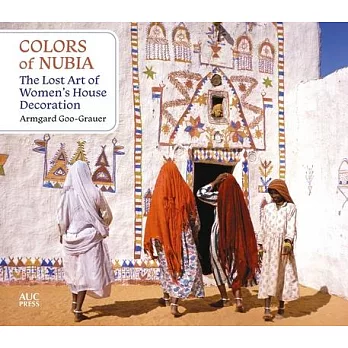An intimate historical portrait of the women of Nubia and their unique house decorations including over 400 full color and black and white photographs
Between 1960 and 1970 the building of the Aswan Dam led to the creation of a lake that drowned the Nubian villages of Upper Egypt. The Nubian population were forced to leave their villages and hamlets and relocated to the north. The tradition of Nubian house decoration was discontinued after this traumatic relocation, the adverse impacts of which are still manifest today. In this rich account of Nubian women and their house decorations, Armgard Goo-Grauer offers a beautifully photographed narrative of the way the Nubians of Upper Egypt lived before their villages were destroyed. She paints an intimate portrait of women engaged in household tasks, preparing feasts, and performing in the female world of religion and spirituality, and illustrates how decoration of the home fulfilled the purposes of beautification, representation, and protection. The art form, which was unique in the area, covered a wide spectrum of motifs and styles--plants, animals, humans, designs, patterns, and daily objects. Many paintings were embedded in Nubian folk beliefs; and were intended to provide blessing or ban the evil eye. However, they also contained contemporary influences and aspirations of women, offering an exceptional window into the mindset of Nubian women before 1964, who maintained the Nubian language and traditions and achieved a remarkable degree of self-determination.


 天天爆殺
天天爆殺  今日66折
今日66折 

























 博客來
博客來 博客來
博客來 博客來
博客來 博客來
博客來 博客來
博客來